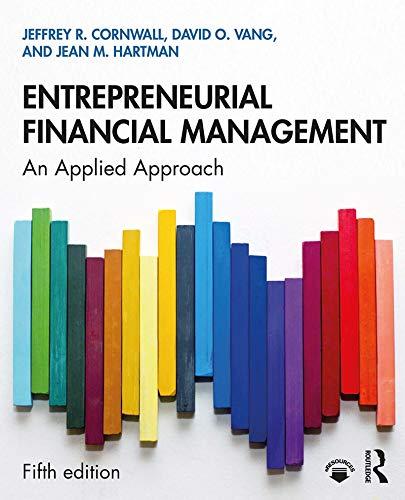The most recent financial statements for Crosby, Inc., follow. Interest expense will remain constant; the tax rate and the dividend payout rate will also remain constant. Costs, other expenses, current assets, fixed assets, and accounts payable increase spontaneously with sales. Assume the firm is operating at full capacity and the debt- equity ratio is held constant. CROSBY, INC. 2017 Income Statement Sales $756.000 Costs 612.000 Other expenses 25,500 Earnings before interest $ 118,500 and taxes Interest paid 11,200 Taxable income Taxes (23) $ 107,300 24.679 Net Income $ 82,621 Dividends Addition to retained earnings $41.340 41,281 CROSBY, INC. Balance Sheet as of December 31, 2017 Assets Liabilities and Owners' Equity Current assets Current liabilities Cash $ 24,540 Accounts payable $ 58,600 Accounts receivable 33,890 Notes payable 15,500 Inventory 70,790 Total $ 74,100 Total $ 129,220 Long-term debt $ 104,000 Owners' equity Common stock and paid in surplus Retained earnings Fixed assets Net plant and equipment $ 99,000 $ 213,000 65,120 Total $ 164,120 Total assets $342.220 Total liabilities and owners' equity $342.220 Complete the pro forma income statements below. (Do not round intermediate calculations. Round your answers to the nearest whole dollar amount.) Pro Forma Income Statement 10% Sales Growth 15% Sales Growth 40% Sales Growth Sales Costs Other expenses EBIT Interest paid Taxable income Taxes (23%) Net income Dividends Add to RE Calculate the EFN for 10, 15 and 40 percent growth rates. (A negative answer should be indicated by a minus sign. Do not round intermediate calculations and round your answers to the nearest whole dollar amount.) The most recent financial statements for Crosby, Inc., follow. Interest expense will remain constant; the tax rate and the dividend payout rate will also remain constant. Costs, other expenses, current assets, fixed assets, and accounts payable increase spontaneously with sales. Assume the firm is operating at full capacity and the debt- equity ratio is held constant. CROSBY, INC. 2017 Income Statement Sales $756.000 Costs 612.000 Other expenses 25,500 Earnings before interest $ 118,500 and taxes Interest paid 11,200 Taxable income Taxes (23) $ 107,300 24.679 Net Income $ 82,621 Dividends Addition to retained earnings $41.340 41,281 CROSBY, INC. Balance Sheet as of December 31, 2017 Assets Liabilities and Owners' Equity Current assets Current liabilities Cash $ 24,540 Accounts payable $ 58,600 Accounts receivable 33,890 Notes payable 15,500 Inventory 70,790 Total $ 74,100 Total $ 129,220 Long-term debt $ 104,000 Owners' equity Common stock and paid in surplus Retained earnings Fixed assets Net plant and equipment $ 99,000 $ 213,000 65,120 Total $ 164,120 Total assets $342.220 Total liabilities and owners' equity $342.220 Complete the pro forma income statements below. (Do not round intermediate calculations. Round your answers to the nearest whole dollar amount.) Pro Forma Income Statement 10% Sales Growth 15% Sales Growth 40% Sales Growth Sales Costs Other expenses EBIT Interest paid Taxable income Taxes (23%) Net income Dividends Add to RE Calculate the EFN for 10, 15 and 40 percent growth rates. (A negative answer should be indicated by a minus sign. Do not round intermediate calculations and round your answers to the nearest whole dollar amount.)









